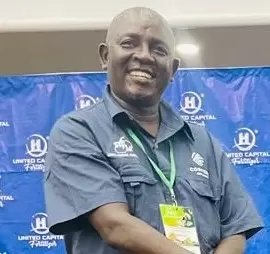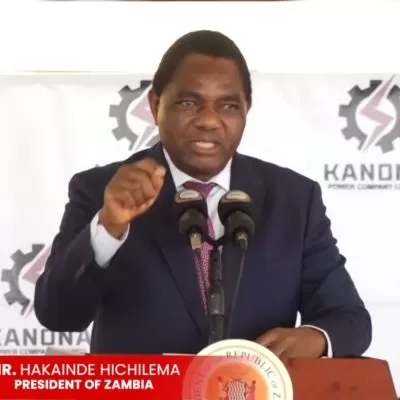South Africa’s power capital is being left behind in the race for renewable energy generation, reports Andiswa Matikinca
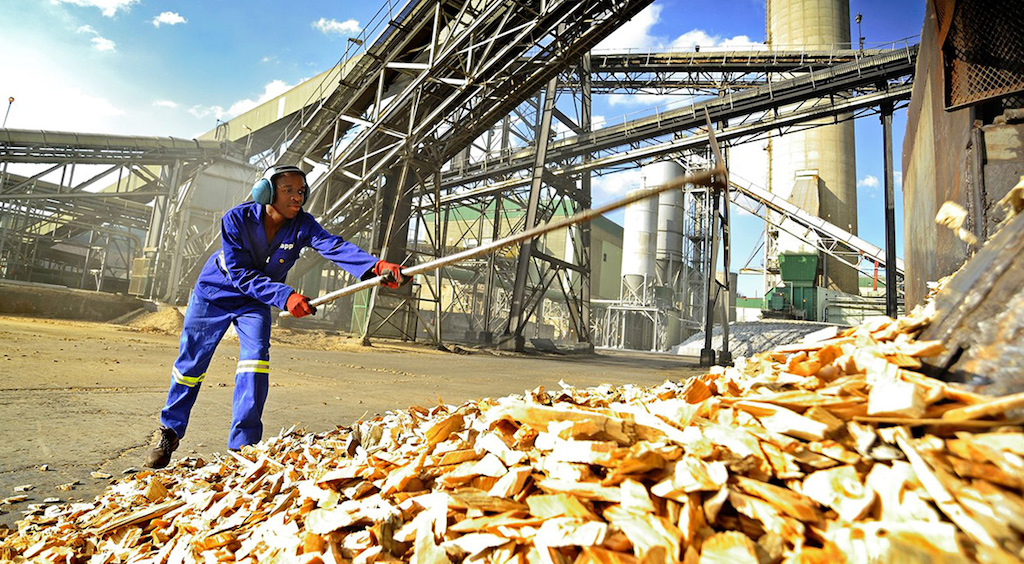
The Ngodwana biomass plant, powered by waste from the Sappi wood and paper mill, was due to supply energy to Eskom from March 2022. Photo courtesy Sappi
Just one renewable energy project in Mpumalanga, South Africa’s power capital, has been contracted to supply the Eskom grid – despite the planned decommissioning of six coal power stations based in the province by 2030.
Data collated by Oxpeckers Investigative Environmental Journalism indicates Mpumalanga has missed out on new generation efforts implemented by the Department of Mineral Resources and Energy’s independent power producer (IPP) procurement programme, and that renewables initiatives taking place on the ground are being executed by the private sector.
Out of the 92 renewable energy contracts concluded by the IPP Office by February 2023, the only one located in Mpumalanga is the 25MW Ngodwana biomass power plant. The majority of approved projects are based in the Northern Cape, some 1,000km away.
The Ngodwana biomass plant, situated about 50km outside the provincial capital Mbombela, uses biowaste from the adjacent Sappi wood and paper mill to produce steam and cost an estimated US$89-million to set up. It has been supplying Eskom with 25MW of energy since March 2022, in terms of a bilateral power purchase agreement. Eskom said it was unable to share the details of this agreement because it is bound by confidentiality clauses, and questions sent to Ngodwana and Sappi were unanswered at the time of publication.
Bid windows
The IPP project officer said there are no other projects based in Mpumalanga under the current bid windows being rolled out by the government’s Renewable Energy IPP Procurement Programme (REIPPPP). The programme has had six bid windows since 2011.
“We have not applied a geographic-specific bid window to date,” the officer said in response to questions from Oxpeckers. “Mpumalanga has not traditionally been a preferred location for renewable IPP investments due to RE [Renewable Energy] resources being higher in the more popular provinces of Western, Northern and Eastern Cape. This is very likely to change given the current grid availability challenges.”
The province is home to six of the nine Eskom coal-fired power stations scheduled to shut down by 2035, terminating 15GW of power and putting up to 55,000 jobs at risk. According to the Just Energy Transition (JET) plan released by the presidency on the eve of COP27 global climate talks in November 2022, the ageing fleet of coal power plants – totalling 39GW and averaging a lifespan of 42 years – will be “retired over the next three decades, with 22GW due to be decommissioned by 2035”.
The JET plan highlights that Mpumalanga is currently impoverished and suffers negative environmental impacts from coal mining. The transition is an opportunity to address both current development challenges and impacts from the coal phase-down, it states.
Mpumalanga is “the undisputed home of the national grid”, provincial premier Refilwe Mtshweni-Tsipane said in her State of the Province Address on February 24. In partnership with the Presidential Climate Commission, the Climate Investment Fund and the World Bank, the province is exploring ways to diversify local economies towards the reduction of dependence on coal; re-skill and upskill the labour force; and support small businesses and co-operatives in local communities to access emerging opportunities in the green economy sector.
“Our interest includes that old mines should be rehabilitated, and in the process the vast tracts of land be gainfully utilised in the new industries that conform with the Just Transition principles – such as manufacturing, agriculture and assembly of solar voltaic panels, wind turbines, batteries and others,” she said.
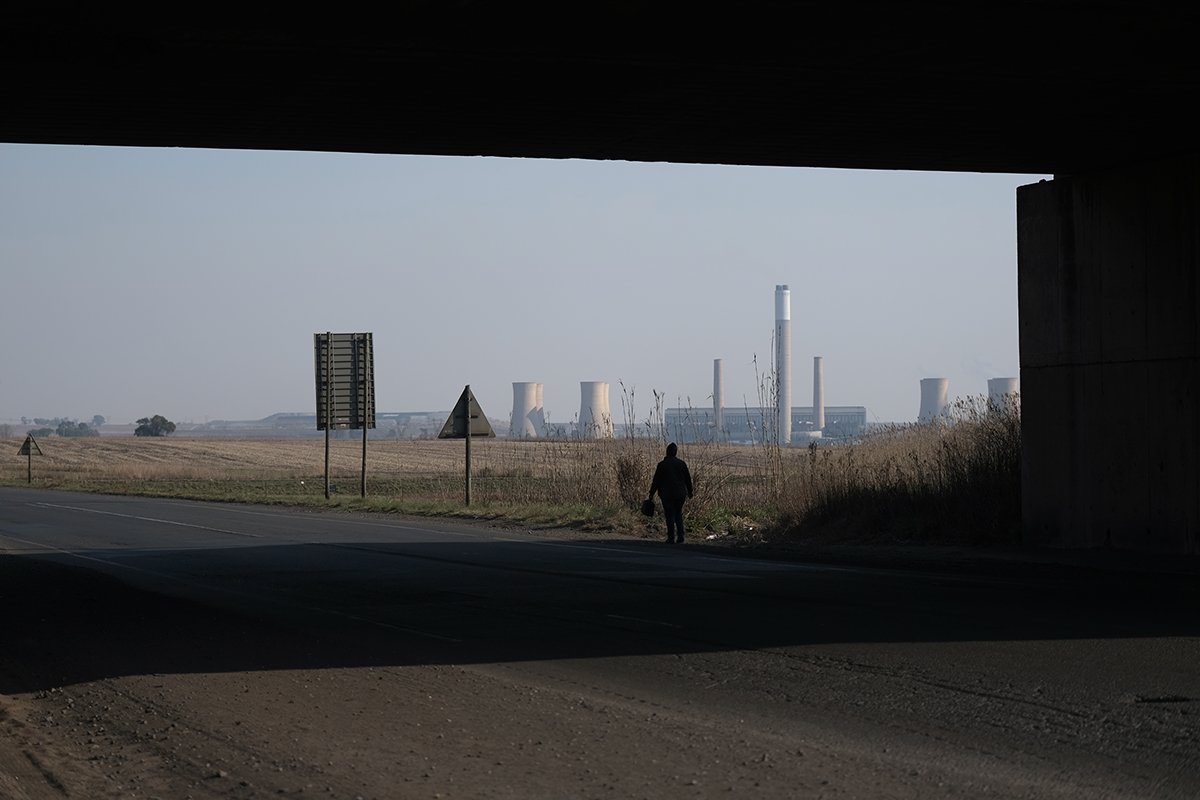
Shadow economy: Mpumalanga is home to six of the nine Eskom coal-fired power stations scheduled to shut down by 2035. Photo: Dianah Chiyangwa
Cost versus location
Independent energy analyst Clyde Mallinson said the IPP Office had focused on costs rather than the location of projects approved under the REIPPPP. Projects in provinces with higher wind or solar resources would cost less and therefore be priced much lower than projects located where there were fewer of these natural resources available.
“There was no cognisance taken of where the projects were in the early rounds – the best solar was probably in the Northern Cape and the best wind was scattered among the Northern Cape, Western Cape and Eastern Cape – and so if you had a project in Mpumalanga in the first iterations of the REIPPPP, you simply wouldn’t have won because the price you would bid at would have had to be higher,” he said.
The location of these outlying projects has caused “hiccups” in the transmission of power from generating plants in other provinces to the Eskom grid for distribution to load centres where it then reaches consumers.
“If we build more wind and solar farms in the Northern Cape and it’s a windy and sunny day, the transmission lines become overloaded – so it would become like the Grayston off-ramp [in Johannesburg] on an early morning traffic run where the Grayston drive would be overloaded and there would be a traffic jam,” he said.
Because the rules of the REIPPPP stipulated that the contracts were “take or pay”, Eskom had to pay the IPPs even if it had to require them to curtail their inputs, he said. “This means even if they don’t deliver electricity to the grid because the grid is congested. Obviously Eskom is not keen to sanction further projects in areas where there may be congestion.”
He suggested a solution would be to regionalise the REIPPP requests for bids. “Split the country up into 10 wind and 10 solar regions, say we are going to accept 10 projects in Mpumalanga and the 10 best projects in the province will be the ones that win. Projects in Mpumalanga would be compared to other projects in Mpumalanga, not projects in the Northern Cape.
“They would bid at higher prices than the Northern Cape ones because the solar resource is a bit lower, but then offer companies what is called a feed-in tariff which basically says, ‘we will pay you 75c if you build a solar plant in Mpumalanga but if you build a solar plant in the Northern Cape, we will only pay you 55c’.”
Grid connections
Democratic Alliance Member of Parliament and shadow minister of energy, Kevin Mileham, said that as the country’s energy hub where the majority of Eskom’s power stations are situated, Mpumalanga is well placed to feed energy from renewable sources on to the national grid.
“Those power stations that are being decommissioned already have grid connections in place, so Mpumalanga would have an advantage in that there would be no requirement for building good infrastructure in order to take off the energy,” he said.
The most recent REIPPPP bidding window approved projects based in the Northern Cape and Free State in December 2022. None was based in Mpumalanga – despite the JET plan highlighting that “Mpumalanga has excellent wind and solar resources, and proximity to electricity load centres, with extensive transport and transmission infrastructure that can be used to support new initiatives in clean energy and other sectors”.
Mileham said the slow rollout with procuring renewable energy projects through the IPP’s Office could be attributed to state interference when Eskom refused to sign power purchase agreements from the REIPPPP’s bid window 4.
“They [the state] have played an enormous role in the delay with the rollout of renewable energy projects,” he said. “South Africa used to be one of the global leaders in the rollout of utility scale renewable energy, but in 2015 Eskom put the breaks on and the ANC from a policy perspective said, ‘we are not so keen on renewables anymore’, so you saw that people who were willing to invest weren’t given the space to invest.”
To take advantage of investment opportunities, Mileham said regulators should have clear rollout plans showing where opportunities for renewable energy generation are and make the regulatory environment more attractive.
“There needs to be a clear rollout plan showing where the opportunities exist and showing where good infrastructure exists for people to connect to. Make that information publicly available and then stick by it. Then they need to get out of the way and let the private sector get on with doing business,” he said.
In response to Oxpeckers questions, the Eskom media desk said the Department of Minerals and Energy, as the procurer of the REIPPP programme, selects preferred bidders based on the assessment criteria stipulated in the request for proposals. “Eskom, as the buyer, will conclude power purchase agreements with the preferred bidders based on Eskom’s acceptable risk assessment of the transaction.”
Asked when Eskom expects to ramp up new generation IPP agreements in Mpumalanga, the media desk said the department “will factor in, among other requirements: technology, optimal renewable energy resources, grid capacity and value for money to the consumer, in rolling out new generation IPP procurement programmes which are not location specific”.
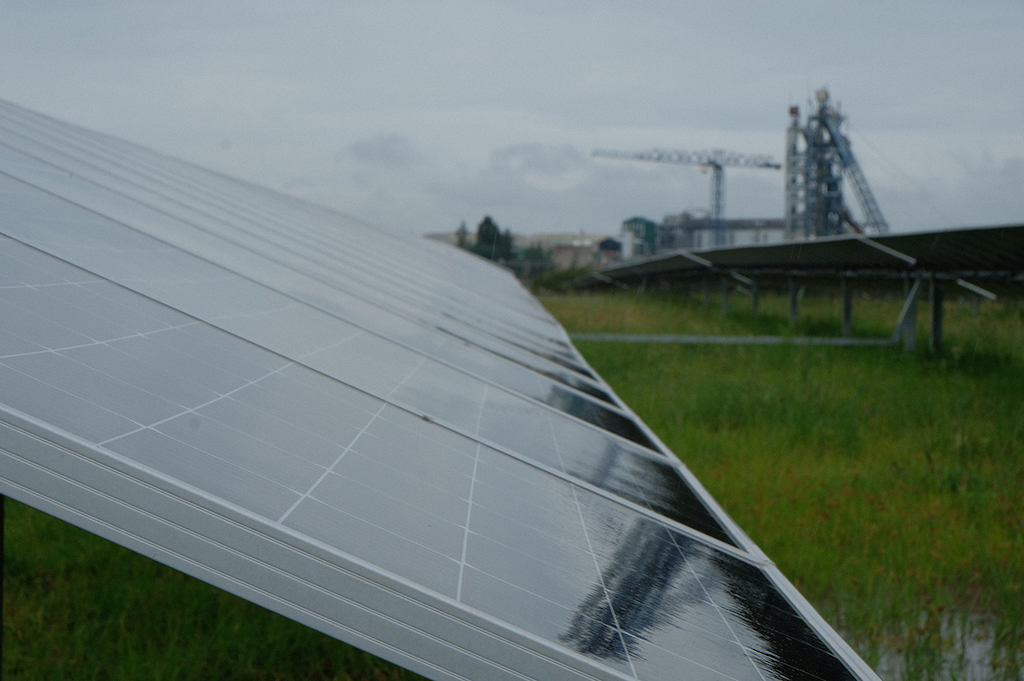
‘Big one’: Elikhulu solar energy plant is the first embedded project bigger than 1MW to receive the stamp of approval. Photo: Dianah Chiyangwa
Land deals
Among the priority investment areas identified by the JET plan is the repurposing of coal-mining lands.
Eskom has signed land lease agreements with four IPP investors, around Medupi power station in Limpopo and Tutuka power station in Mpumalanga. These agreements entail the commercial lease and use of land parcels where there is sufficient grid capacity.
According to an Eskom document on the land-leasing programme, it “will attract an estimated investment of some R20-billion to areas traditionally associated with coal-fired electricity generation”.
The first land parcels were issued to the market for tendering in April 2022 and closed in May 2022. Up to 2,000MW of alternative energy is expected to be produced once the project development and required regulatory processes for these projects are fully developed.
The four IPPs investors who signed agreements with Eskom in October 2022 for a combined total of 6,184ha on 21 farm portions were HDF Energy South Africa, Red Rocket SA, Sola Group and Mainstream Renewable Power Developments.
Questions sent to three of the IPPs about the details of the land deals, their project plans and costs were unanswered at the time of publication. HDF Energy South Africa responded that they were still in the planning stage, and would provide details at the end of May.
The second phase of the land lease programme’s tendering process was launched in December 2022 and was due to close on February 27. The power utility expects this phase to yield up to 500MW of new generation capacity from IPPs.
Eskom’s media desk said the IPPs lease the Eskom land, construct their assets and on completion wheel the energy through the grid for own use or to sell to other consumers.
Asked why the energy generated by the projects from the land lease agreements won’t be bought by Eskom, the media desk said, “The objective of the programme is to expedite bringing new MWs [megawatts] online. For IPPs to sell energy to Eskom it will require DMRE capacity allocations, NERSA concurrence and confirmation of cost recovery, processes that generally take long. For IPPs to wheel electricity for own use will drastically reduce timelines to bring these much-needed MWs to the system.”
The details of the land lease agreements would not be made public, the desk said, “since the agreements have sensitive information – such as pricing, market rentals and IPPs details”.

